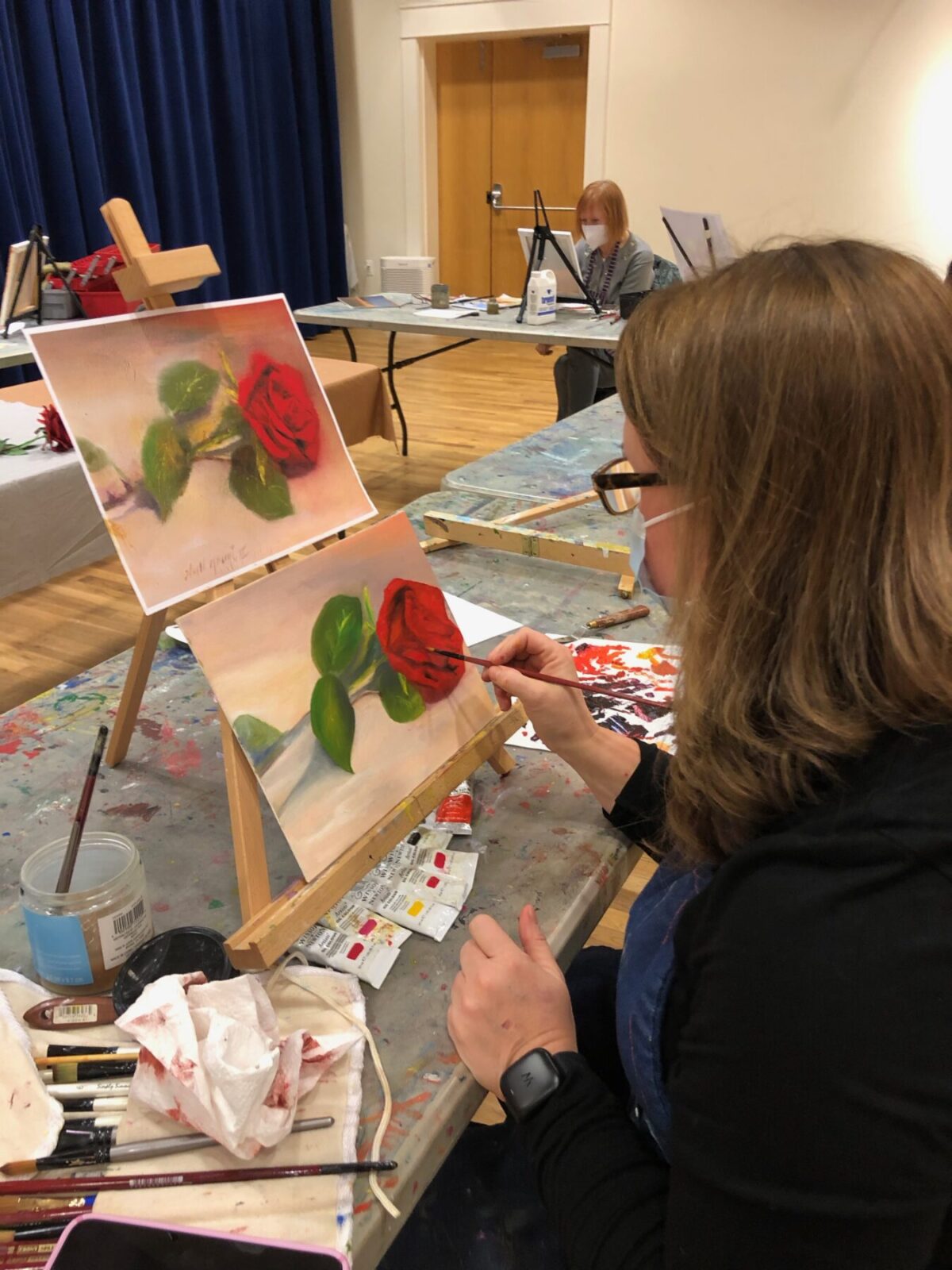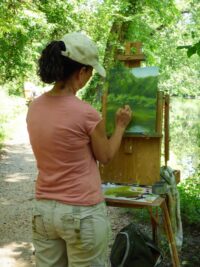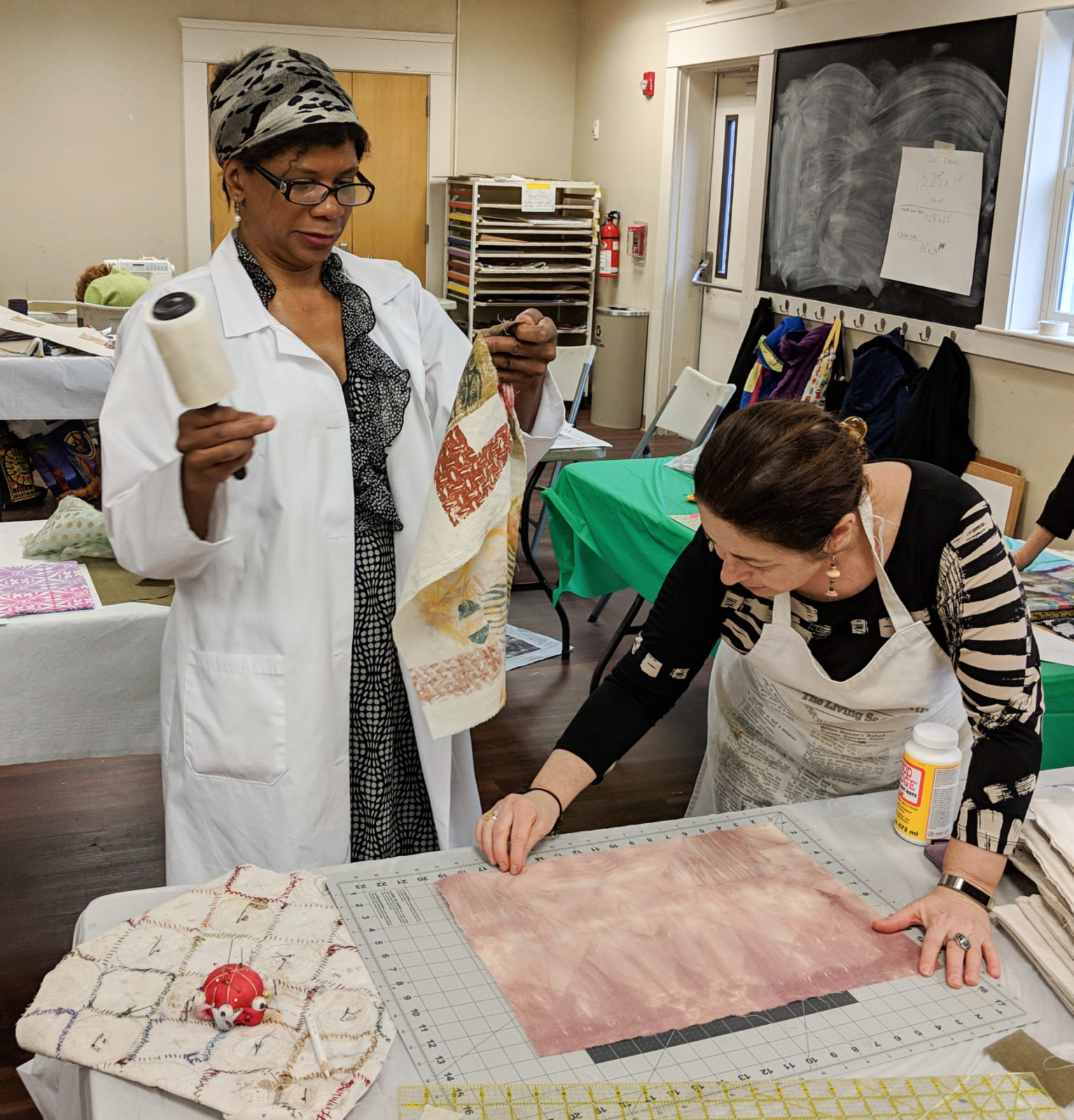Students will learn how to apply the fundamentals of color theory, color qualities, value, saturation, temperature, color harmony and expression. We will address painting in a personal and informed way, whether working from observation, imagination, or abstraction. Using your own personal subject matter as inspiration, such as a picture or photo that means something to you, still life arrangements of objects that are meaningful, or a famous artist’s style you might want to explore, you will create inspiring pieces of work. Students may work in realistic or abstract painting styles and learn a range of techniques. Individual guidance, feedback, and group critiques will help students articulate their creative challenges and strengths and learn to handle compositional challenges in their paintings. Various styles and methods of master painters and movements, traditional through contemporary, will be referenced.
MATERIALS FOR STUDENTS TO BRING
These materials are available at Jerry’s Artarama, Michael’s, or online.
Paints: Basic colors: titanium white, ivory black, cadmium red medium, cadmium yellow light, ultramarine blue, burnt sienna, raw umber, yellow ochre. You can opt for the basic color selection, red, yellow, blue, white and black, for the first class, and add optional colors for subsequent classes, if desired. Optional: colors might be: alizarin crimson, quinacridone red, cerulean blue, cobalt blue, violet, emerald or sap green, & burnt umber. Let your budget be your guide. Beginner kits with a selection of small tubes are acceptable.
Brushes:
Round: round with a pointed tip
Flat: flat with squared ends
Bright: flat with shorter bristles than flat brushes
Filbert: flat with rounded ends
Fan: flat and shaped like a fan
Basic: ½ inch; filbert, ¼ inch; filbert, 1 inch; flat (measured across their width) ½ inch; round, (measured from the metal ferrule, to the tip). Optional: finer tipped brushes for more detailed work, metal palette knife. Brush sets are acceptable. They should include flat and round types, in various sizes. Price is an indicator of quality, nylon synthetics such as sablette or taklon representing good value.
Painting mediums:
ODORLESS thinner/spirits (Turpenoid, Mona Lisa or Gamsol). NO turpentine! You will need a clear glass or metal container with a cover to hold thinner. ). Optional: linseed oil – increases luminosity, yet longer to dry, liquin – speeds up drying time, gives a glossy finish.
Painting surfaces: 9”x12” and 11×14″ canvas boards, or stretched canvas, both often sold in 3-packs.
Palette: Basic 12×16 inch; disposable palette pad
Miscellaneous Recommended: disposable gloves, rags or paper towels, apron or smock.
Optional: a large plastic shopping bag, a sealable palette box, (fisherman’s tackle box), or a large, flat Tupperware container or plastic shoebox will work well as a transportable storage solution.




